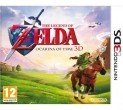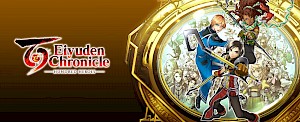News: Iwata Asks About Ocarina of Time - Part 2

Posted 19 Jun 2011 at 15:06 by Aaron Clegg
Nintendo's CEO uncovers another goldmine of information about the development process behind the most critically acclaimed game of all time...
The second part of the Legend of The Zelda: Ocarina of Time Iwata Asks is out, and with it comes a new deluge of neat trivia about the original game's development. Here is (courtesy of GoNintendo) a convenient summary of what transpired.
Firstly, the team discussed the thought behind designing non-playable characters (NPCs). Accordingly, the first thing designed about any character of any race is their general shape, with the face coming later. The thinking was that players would be much more likely to remember individual characters based on their distinctive physical shape. Interestingly, the relatively obscure owner of the game's fishing pond was designed three times before the team settled on the version we see in the game.
A particular example of distinctive... shaping is the voluptuous appearance of the Great Fairy. Zelda's current lead producer Eiji Aonuma was rather shocked when he first saw the "flamboyant" design. But nonetheless, the Great Fairies were deliberately designed to surprise people, rather than taking on a typical appearance of what people would expect from a fairy.
On the subject of enemy and boss designs, it was explained that Aonuma-san would lay out the basic "specs" for an enemy before Satoshi Takizawa would actually produce the design, and Nintendo's programming division at SRD would then "make them move". Aonuma revealed that he initially would sketch out enemy designs before Takizawa-san politely asked him "could you please stop drawing your own sketches". Takizawa saved face by explaining it was merely because he wanted more freedom when designing enemies; preferring to create their look from scratch.
Perhaps the more mind-bending nugget of the session came up when discussing the Fire Temple boss Volvagia, the flame-spitting, flying serpent that twists and turns in the air. Takizawa was particularly impressed by how the programming division at SRD could make it animate that well in a short space of time. The secret is that Volvagia's movement comes from the exact same programming that can be found in Star Fox 64 when an Arwing weaves and dodges a tailing fighter craft. Neat!
The fan-popular fishing element apparently came into the game at a relatively late stage. The idea for fishing cropped up when the team was making the watery boss stage in the Water Temple. At first, they just put a fish into the water to see it swim around. Then they decided to see how well it would look if Link cast a fishing rod with his pre-existing sword animation. All this was being experimented by Kazuaki Morita at SRD when he was officially supposed to be working on the bosses. His secrecy was such that he hid all the fishing work from Aonuma whenever he dropped by. In the end, the team decided to make fishing its own fully-fledged feature in the game, even though it had nothing to do with Link's main adventure.
Of course, it wouldn't be a Zelda development without Shigeru Miyamoto dropping by late in the game and suggesting something left-field. It was Miyamoto's idea that players should be able to cut through signs in the game. It was only once the team had implemented this ability that Miyamoto proclaimed "Now that's The Legend of Zelda!"
Indeed at many points, it seems like development on Ocarina of Time was little more than a small group of people throwing out ideas without any sense of a guiding rulebook. The development of Kakariko Village, for instance, never had a specific blueprint from the get-go, it rather just came about from separate members throwing out ideas for residents and buildings. This is crucially how pretty much ever Zelda title is made: a group of people talking over separate little ideas rather than having some overarching blueprint. Whether this is the best way to make a game or not is up for debate, given the team's unusual joy at Ocarina's constant delays, citing the extra time as an opportunity to go back and fix, polish and change numerous parts of the game world.
The Legend of Zelda: Ocarina of Time 3D is now on European shelves. If ever there was a time to experience this classic, now is it!























